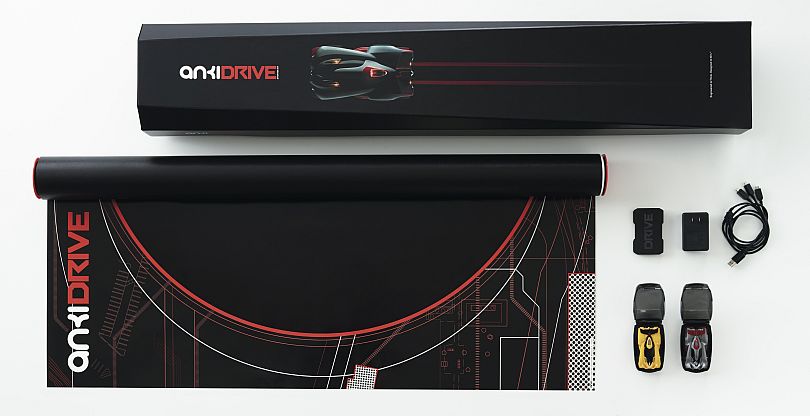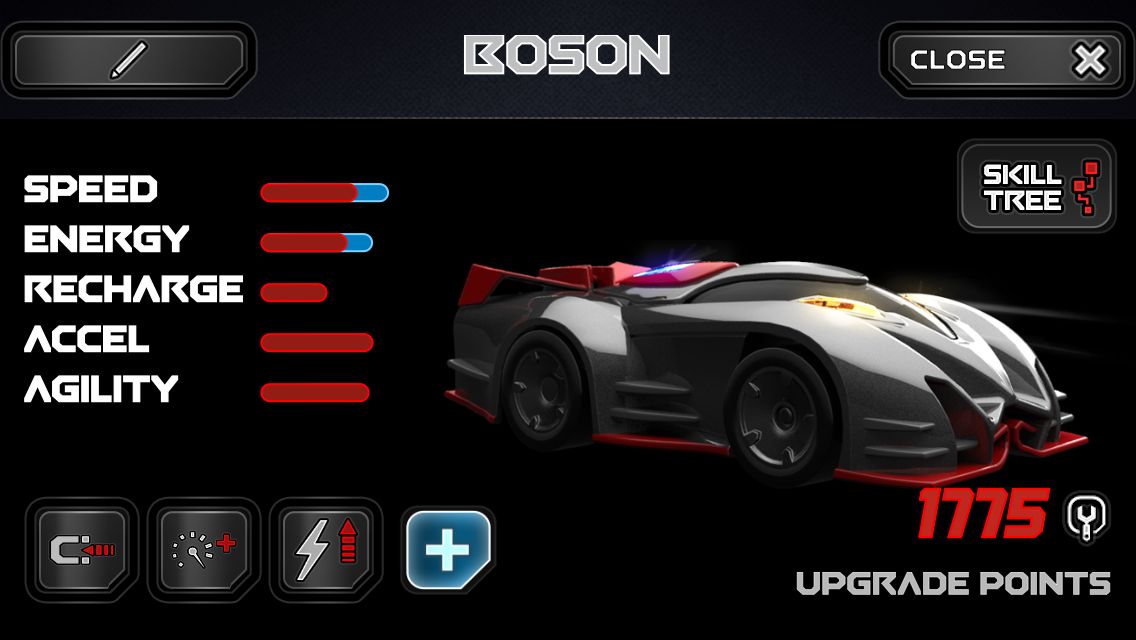There’s a new type of racing game coming to iOS, and it’s so unusual that Apple CEO Tim Cook presented it as part of the keynote at the Worldwide Developer’s Conference in June. It’s Anki Drive, and the racing game uses iOS devices to control real robotic race cars that can motor around the track by themselves. It’s easy to play by merely tilting your iPhone to control the direction of the car, and sliding a power button to control the speed.
The cars race on a special vinyl race mat, while the robot brains of the cars keep them on the track with ease. The game is like a real-world Mario Kart battle, where you fire your weapons at other cars (which activates LEDs and sounds) to earn points. You also gain experience through racing and then customize your cars, building them to suit your play style.

“As exciting as this step is for us, we look at it as much more than just the launch of our first product,” Boris Sofman, co-founder and CEO of Anki. “We see it as a key step in a massive new industry still in its infancy. We see Anki Drive as a milestone in consumer robotics, and a demonstration of how transformative robotics and artificial intelligence technologies can be to categories that have yet to be touched by them. When we created Anki Drive, we also created a foundation of technologies that are now the building blocks for many of our future products.”
The company grew out of nights and weekends at Carnegie Mellon, where the three co-founders looked for ways to bring robotics technology to a consumer audience. The relentless advance of Moore’s Law means that sophisticated microcontrollers, cameras and other components are inexpensive. “We can now take sophisticated algorithms and make them available to consumers,” said co-founder and chief product officer Mark Palatucci.

Anki is doing this with a sense of style, too, bringing in Hollywood designer Harald Belker. “Harald is the man behind the design of such film icons as the ’96 Batmobile, the vehicles in Minority Report, Tron Legacy and recently, Total Recall 2012,” said Hanns Tappeiner, co-founder and president of Anki. The car designs for Anki Drive show this heritage, and add to the impression that Anki has left no element of the product to chance.
The packaging and presentation are top notch, and Palatucci noted that the intent is that customers will use the packaging as a storage case for the product. Even the car cases are functional as well as beautiful, holding the car in a display case that also has a charging port.

Anki Drive is more than just attractive cars and packaging, though. It’s also a rather deep game, since you are competing to gain points by using customizable weapons and defenses while you race around the track. You gain experience over time and can further customize your cars. You can race against the AI of the robot cars, and when you crank up the difficulty level it’s very challenging. Of course, it’s fun to race against other people, and this brings all the fun of a slot car set or a train set to a whole new level.
One of the most important features of Anki Drive is the price. It’s $199.99 for the case, the track, and two cars, with additional cars available for $69.99 each. Each car provides about 20 minutes of racing before a recharge, which takes about seven minutes. The product is available at Apple stores on October 23, and next year will be available at a variety of major retail chains. It’s only on iOS at the moment, but Android compatibility would seem to be only a matter of time.
It’s a futuristic mix of the fun of RC cars without the need to learn fine motor skills in order to play a strategic racing game. The blend of game and toy works very well here, and points the way to some exciting possibilities for the future. Perhaps some day you’ll be controlling miniature robot fighters as they make their way through a dungeon. In the meantime, Anki Drive looks like great family fun as well as a competitive game for all ages.

